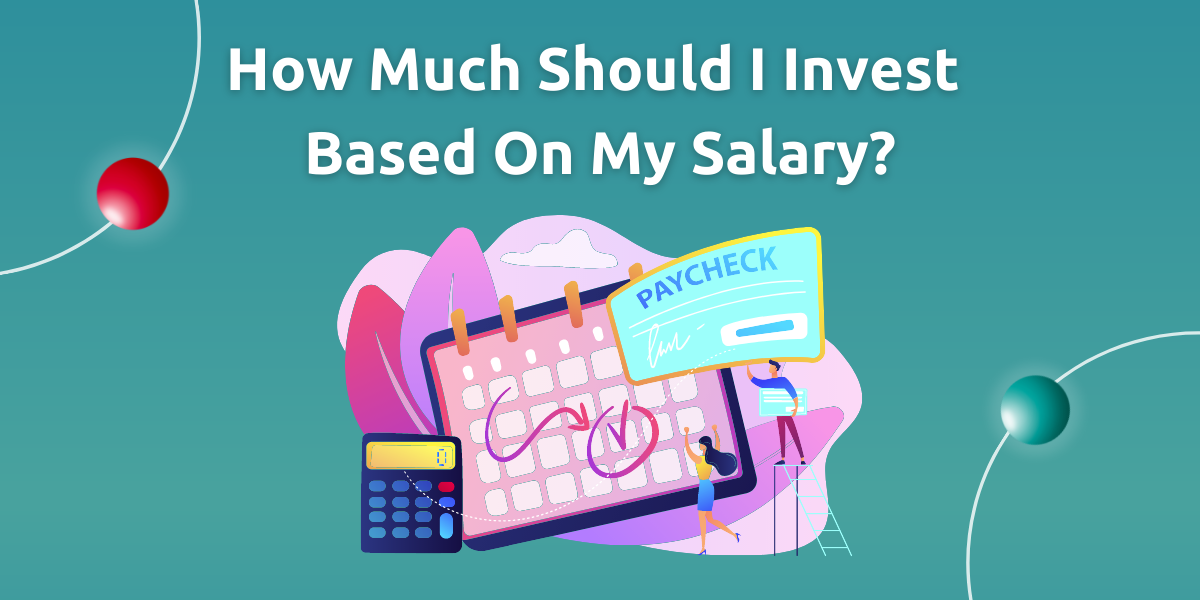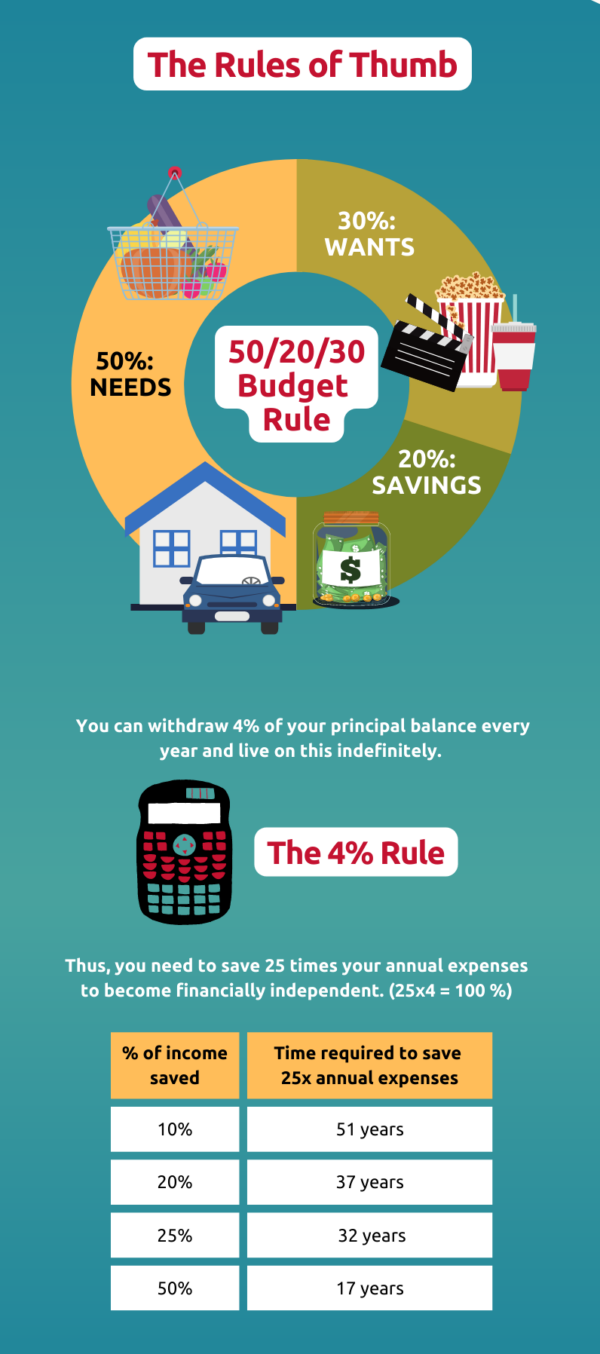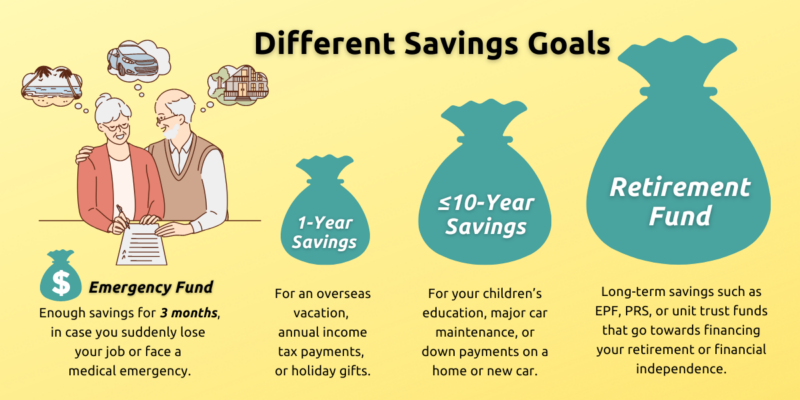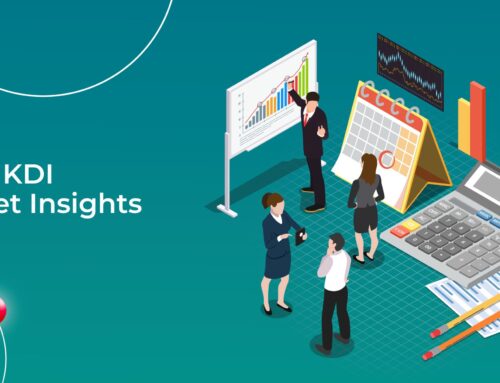How Much Should I Invest Based On My Salary?

A frequently-asked question by beginner investors is “How Much Should I Invest?”
A better question would be, “What Are My Savings Goals?” Many people dream of becoming a millionaire and being able to retire early or achieve financial independence. True financial independence means that you never have to work again and instead live off your current savings, along with the growth, interest, or dividends.
How soon you achieve financial independence depends, as always, on how much goes into your bank account each month and how much goes out. Proper budgeting can ensure you have money left over from your paycheck each month, after expenses, to save and/or invest.
How much you should invest is also based on where you are on the career ladder or time horizon to retirement. If you are a single working adult in your 20s and 30s and thus able to take on more risk, you should set aside a higher percentage of your salary to invest.
As you start a family, and put your children through school, the percentage set aside monthly for savings and investments is likely to fall, considering your increasing expenses and lower risk profile the closer you get to retirement or financial independence.
Key Budgeting Rules
A common budgeting rule of thumb is the 50/20/30 Budget Rule (or 50-30-20), popularised by U.S. Senator Elizabeth Warren in 2005 when she was then a bankruptcy law professor at Harvard University.
Put simply, 50% of your salary (after tax deductions) each month goes to paying for your Needs: rent or mortgage payments, car loan payments, groceries, insurance, health care, minimum credit card payments, and utility bills.
Another 30% goes to your Wants: dining out, movies, gadgets, concerts/gigs, electronic gadgets or new clothes, as well as vacations and your various entertainment subscriptions (Netflix, Prime, Disney+).
The final 20% should be allocated to your Savings. This includes EPF or pension contributions (both yours and your employers), fixed deposits (FDs), stock market investments, and even additional debt repayments that will reduce your total amount owed over the long term.

Using a 5% annual return rate, if you followed the 50/20/30 rule and saved 20% of your salary each month, you would be able to retire or be financially independent in 37 years. If this sounds like a long time, keep in mind that a 5% annual return is typically on the low end of market return rates.
The S&P 500 Index, which tracks the performance of 500 large companies listed in U.S. stock markets, averaged returns of 15.8% annually between 2011 and 2021. You can use this online tool to calculate average returns over different periods of time, but largely stock market returns come in at around 10% every year.
Consider Your Savings Goals
Besides retirement/financial independence, you should outline savings goals based on different timelines.

If you have more future commitments, such as more dependents/children and larger home/car loans, you may need to start smaller. Instead of 20% of your salary set aside for savings, start with 5% and slowly work your way up to 20% when your children have graduated or your loans are paid off.
Similarly, you can tweak your budget if you find your “needs” exceed 50% of your salary. How much of your “wants” are charged to your credit card and thus, increasing your minimum payments? Can you find a place with lower rent or use more public transport to reduce your spending? Maybe cut down on trips to the mall and cook at home instead?
Maximising Your Returns
Your monthly EPF contributions (minimum 9% as of May 2022) count towards your long-term savings, as do your employer’s (minimum 12%). EPF returns have averaged 6% over the past 10 years, while Private Retirement Schemes (PRS) are seeing annualised returns between 5% and 8% over the past five years.
However, with yearly inflation of 2-3% eating into these gains, you need to diversify your portfolios beyond low-return and lower-risk pension funds. Both EPF and PRS make it difficult to access your savings before retirement age, so you need to set up separate savings funds with more liquidity (easily converted into cash) for your shorter savings goals/ emergency needs.
One investment tool that can give you this flexibility while maximising your returns is KDI Invest, a robo-advisor by Kenanga Digital Investing that helps you invest in a basket of selected Exchange Traded Funds (ETFs) listed in the U.S. that matches your risk profile and investment preferences.
There are many types of ETFs: bonds, industries, commodities and currencies, among others. Due to the large variety of ETFs and higher liquidity in the U.S., KDI Invest’s artificial intelligence (AI)-powered algorithm leverages the data-rich environment of U.S. ETFs to improve its predictions and adjust investment portfolios quickly in response to market trends.
Find out how KDI Invest can help you reach your savings and investment goals here, or download the Kenanga Digital Investing app on Google Play or the Apple App Store and set up your KDI account today.
